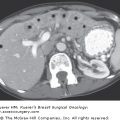The purpose of this chapter is to define and describe the factors that an investigator needs to consider in conducting a multicenter, randomized clinical trial evaluating various treatments in breast surgical oncology. Many examples and experiences will be drawn from the National Surgical Adjuvant Breast and Bowel Project (NSABP), which has had a 50-year history of conducting such evaluations.
The goals of this chapter are to make the reader aware of the principles that lead to a verifiable scientific discovery via the conduct of a clinical trial and to direct the reader to other resources that further elucidate and educate. Additional goals are to increase the reader’s awareness of the potential obstacles and pitfalls that can be associated with the study conduct, to provide real-world examples, and to characterize the mindset and skill sets that are valuable in the conduct of a clinical trial. Because of the complexity and the breadth of topics, no single book chapter can extensively describe all the information that is necessary for an investigator to embark on a study.
In its simplest form, a clinical trial is an experiment in humans designed to compare treatments. All the major landmark surgical oncology trials have been “controlled clinical trials,” which are defined by Meinert and Tonascia as “a clinical trial involving one or more test treatments, at least one control treatment, and concurrent enrollment, treatment and follow-up of all patients in the trial.”1 The conduct of that trial comprises a sequence of steps necessary to bring that trial to completion. It requires the recruitment of a sufficient sample size of evaluable study population, the administration of the assigned therapies, and the construction of a database of sufficiently high integrity that will be available for analysis by the study statisticians and the drawing of conclusions by the study scientists.
If the “conduct” of a clinical trial were a simple matter, it would not have evolved into the major industry that it has become today, with thousands of books, peer-reviewed articles, and other scientific publications devoted to the subject and with hundreds of contract research organizations promoting their services. When considering the factors necessary to mount a clinical trial, investigators must have access to all available information and proceed in a systematic, controlled, methodologic progression.
The clinical trial protocol document serves as the plan for how the trial is to be conducted. There should be a strong relationship between this document and the ensuing conduct of the protocol. The successful conduct of the trial will be enhanced if the individuals responsible for carrying out the trial participate in the development of the protocol document. Review by these individuals should concentrate on the logistical aspects of the protocol, including eligibility assessment, subject recruitment, treatment administration, and follow-up surveillance. Their review should ensure that the protocol is internally consistent with respect to these factors and that the protocol clearly defines the logistics of entry, treatment, and follow-up.
Before mounting a clinical trial, a formal recruitment plan should be established. The recruitment plan will be influenced by whether the study population as defined in the protocol exists in sufficient numbers and whether the population of eligible patients can be readily ascertained by the investigators at the time when they would meet protocol eligibility criteria.
The recruitment of participants into a clinical trial should be approached as a specialized discipline. Much rests on the success of the recruitment effort, so the trial organizers need to take advantage of any available related literature, discuss the trial expectations with others who have had experience recruiting similar subjects, and consult with individuals who have the general knowledge, recognized skills, and practical experiences in patient recruitment to clinical trials.
To establish the expected recruitment pattern, trial organizers might elect to conduct a pretrial survey of investigators to determine whether they have access to potentially eligible patients and interest in the proposed trial. The survey can also serve to increase awareness of the planned trial among the investigators. Any pretrial estimates and plans for recruitment must address the “recruitment funnel,”2 the phenomenon that more patients need to be approached about clinical trial recruitment than the number that eventually end up consenting to participate.
To the extent possible, trial leaders must attenuate any logistical and fiscal burdens placed on the investigators and participants during the recruitment process. Early during the recruitment phase, it might also be beneficial for the trial leaders to survey participants who have enrolled in the trial and their investigators in order to establish what successful mechanisms were employed and why the participants agreed to trial enrollment. If the survey results point to procedural or logistical changes that could positively impact recruitment, consideration should be given to modifying the recruitment plan.
It is essential that any recruitment plan does not coerce or influence the investigators such that their potential participants are not fully informed, committed, and willing to participate in the study. The recruitment of participants who are not fully committed to completing the treatment and/or follow-up phase of the trial may adversely affect the trial outcome.
The team responsible for conducting a clinical trial needs to be fully apprised of the qualifications and reputations of the sites and investigators that will be involved in the study. Additionally, depending on the required sample size, it might be prudent to select from among a larger group of sites and investigators those that are most qualified to participate.
Stay updated, free articles. Join our Telegram channel

Full access? Get Clinical Tree








